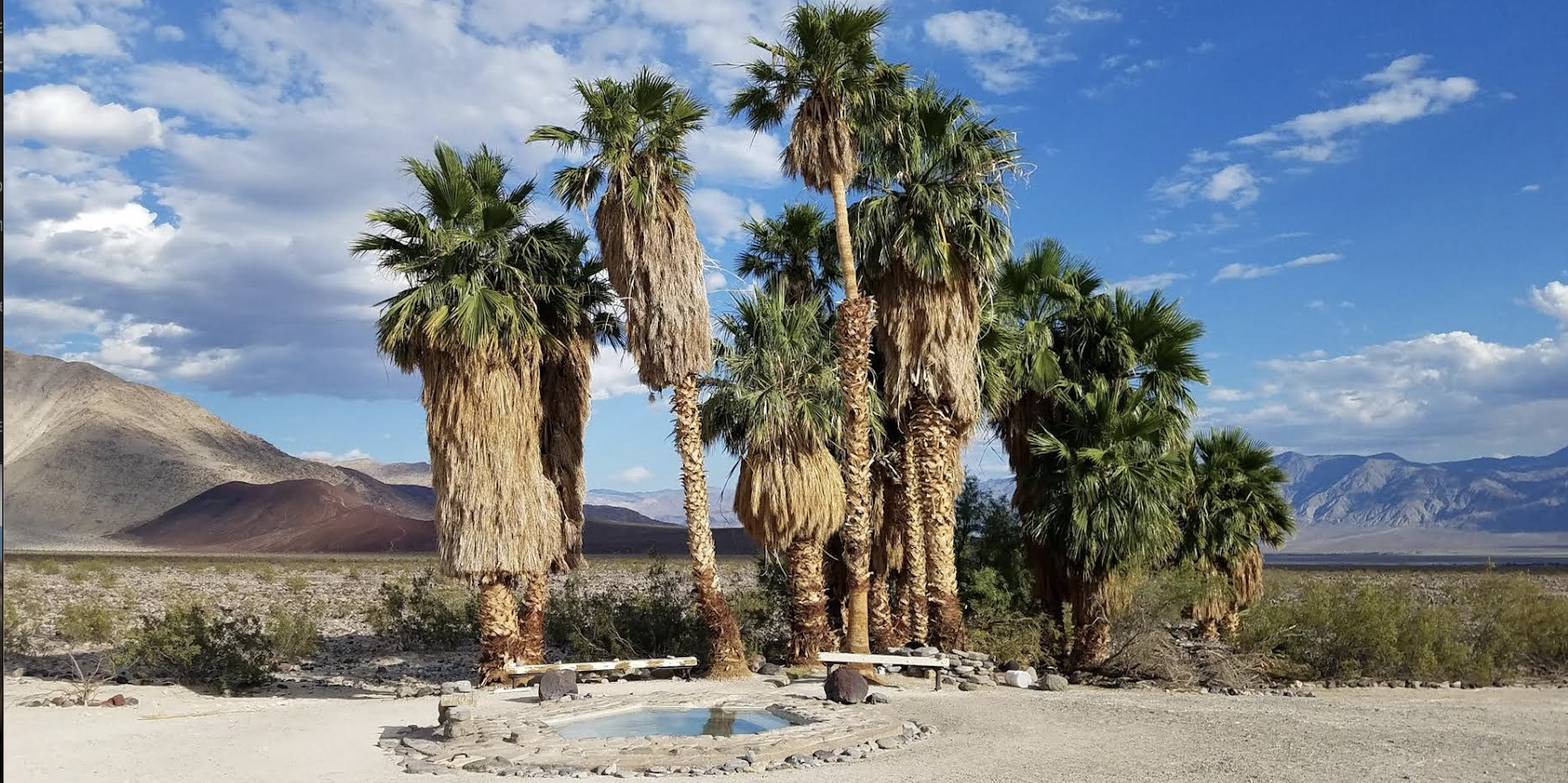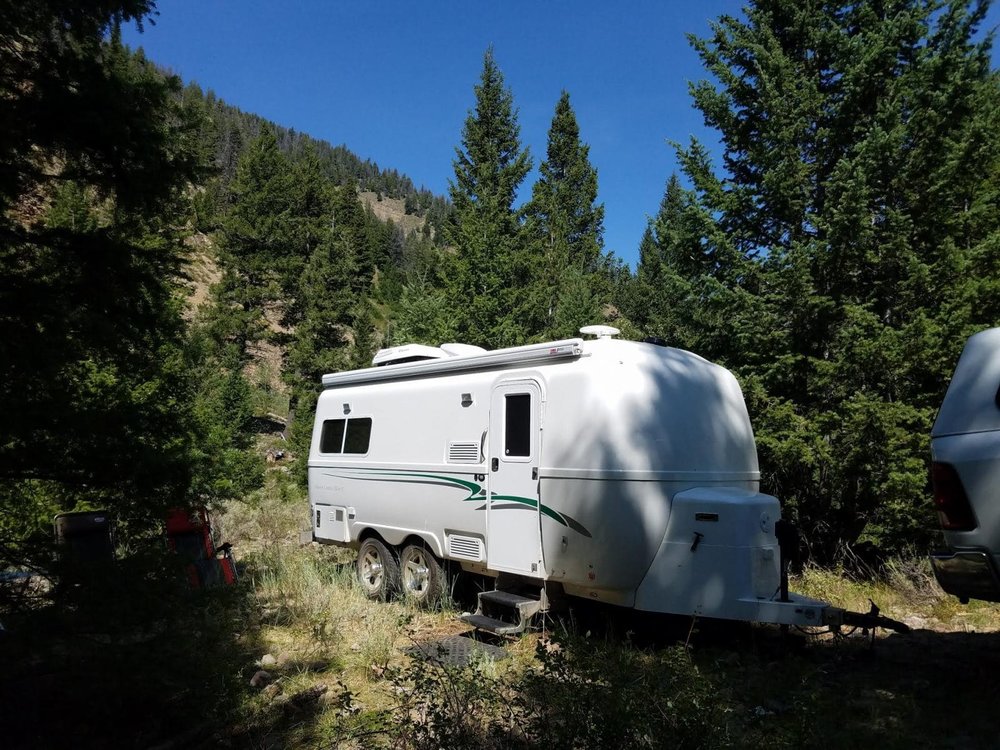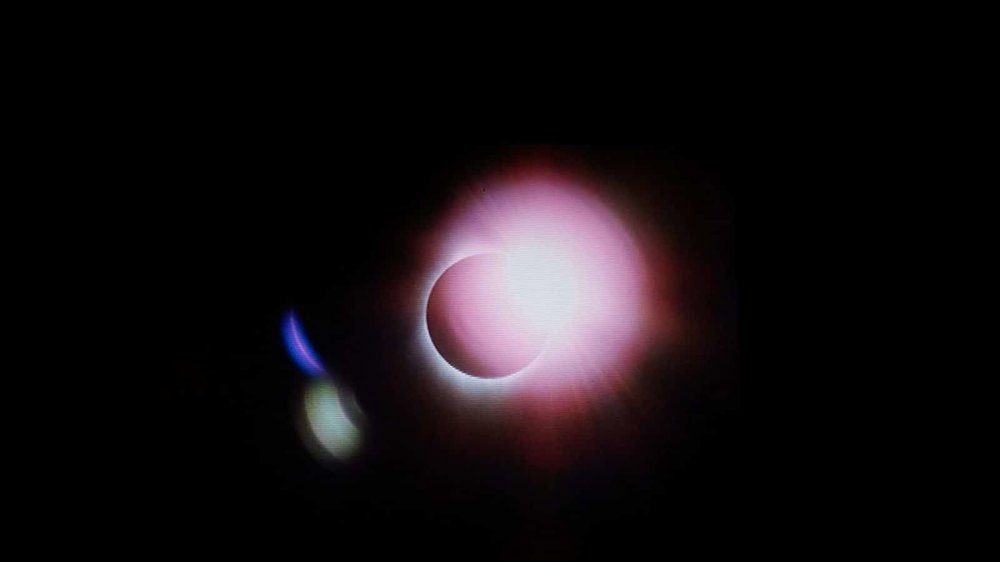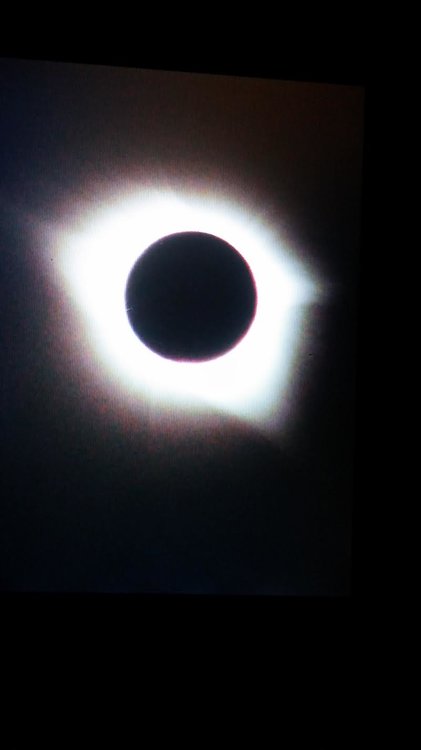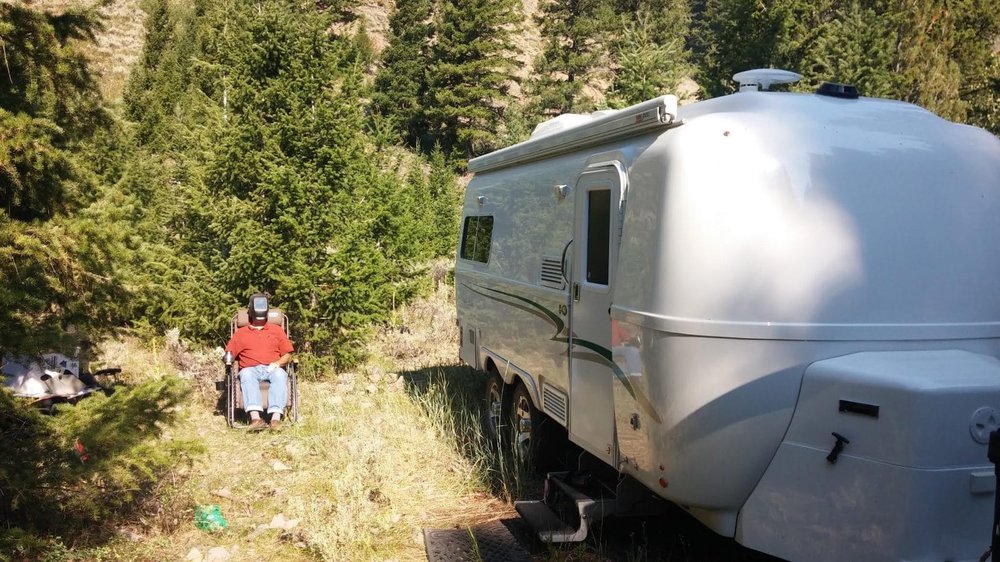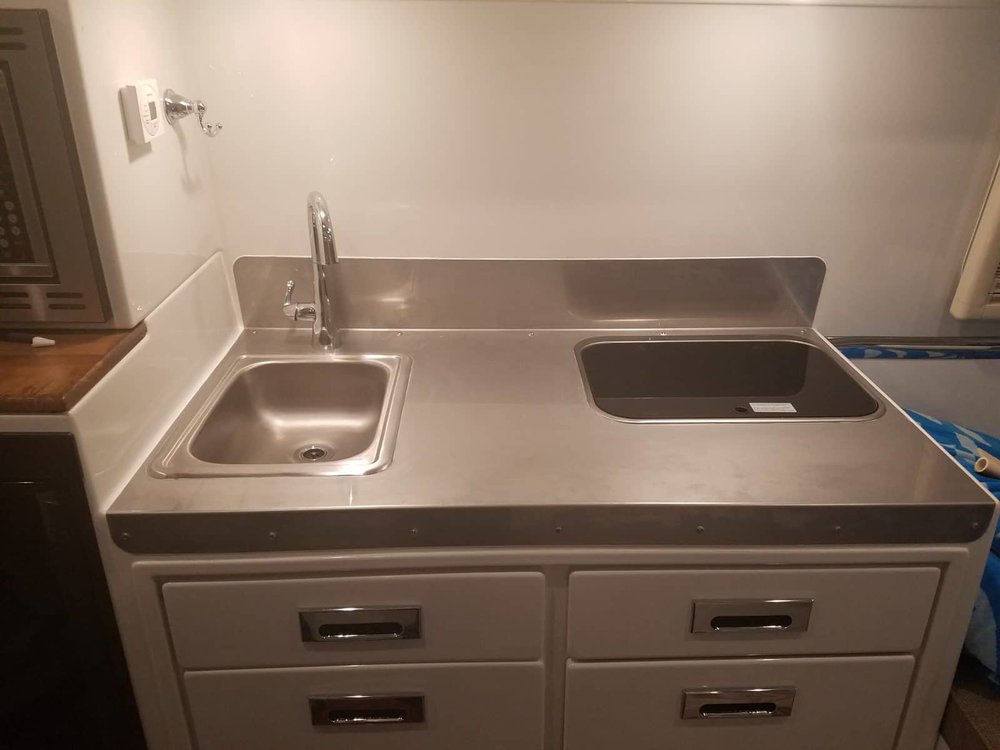-
Posts
666 -
Joined
-
Last visited
-
Days Won
45
Everything posted by Raspy
-
That looks like it will work pretty well. I wonder too, how they plan to resolve the issue for the trailers out West? Anyone can contact me if needed.
-
It's impossible to get away from wear when you have a forged, two piece coupler on a machined ball. Under normal circumstances, this would be predominantly on the top area of the ball, due to the tongue weight down force. This is where mine shows wear and it was expected. But with the particular design of the Anderson, there is a very large and constant forward force applied to the ball. The Bulldog coupler doesn't seem to really be designed for this, but is perfectly capable of handling it as long as the sliding sleeve does it's job. The way the two forged pieces come together to enclose the ball doesn't describe a perfect spherical shape to match the ball and there has to be some grinding. Load leveling hitches in general put a lot of force of the coupling/ball interface. Anderson used to say not to grease this interface, but I've recommended to always grease it. Bottom line: There will always be wear with this design. The chrome finish is the first to go. The ball and socket fit will never be perfect. Wear will be much faster with load leveling than with a simple coupling. I've never been a big fan of the Anderson design, but with the tongue design of the Oliver and the factory offering only this brand and design, it seems there will have to be some maintenance or replaced parts occasionally. I doubt anyone really needs one of these special hitches as the Oliver is incredibly stable by nature. Heavier rear springs or air bags would handle the tongue weight more efficiently than the awkward geometry of the tensioned chain design. If damping was needed, and I doubt it is, a strut design might be better than the cone clutch and chains of the Anderson that seems to always be making too much noise and need replacement.
-
Disk Brakes are sweet. But it's not all good. They are an expensive item and much more complicated. The electric over hydraulic control system with all new hydraulic lines run to the wheels, for instance. The installation of the hydraulic unit on the trailer somewhere. And the difficulty in getting replacement parts quickly and easily if needed. If you think you are going to recover the cost because you'll be getting better mileage, your only fooling yourself. Drum brakes, set up properly don't drag and if they dragged enough to cost mileage they would quickly burn up. Disk brakes do drag, but still not enough to cause a problem. Slight looseness in the bearings will cause much more drag with disks than with drums, so bearing maintenance is more important. In order to remove the hub to grease the bearings the caliper has to also be removed, which is an additional step, and it must be torqued properly when going back together. My drum brakes work very well now that they are broken in and I'm happy with them. Again, the simplicity, low cost, ease of getting parts and the ability for anyone to work on them are important factors for a travel trailer that could find itself anywhere. One area of improvement though is the ability to have anti-lock. If the new disk setup you choose has anti-lock, it would be a big safety improvement in bad weather, but again, even more complicated, with a computer to manage the system. Also, disks work better in reverse than electric drum brakes do, but that's not big factor in by world. I'm gonna stick with my drums even though they are an old fashioned and imperfect design.
-

Where will you be on 08/21/17, Total Eclipse?
Raspy replied to John E Davies's topic in Events & Rallies
-

Where will you be on 08/21/17, Total Eclipse?
Raspy replied to John E Davies's topic in Events & Rallies
-

Where will you be on 08/21/17, Total Eclipse?
Raspy replied to John E Davies's topic in Events & Rallies
We were North of Sun Valley, Idaho, about 5 miles in, on a National Forest road. Very near totality and about a mile from the closest other camper. Ollie all tucked in at a great vantage point. Excellent trip. Totally comfortable and all the power we needed from the big batteries. We're getting used to how well Ollie works and like it more and more. Rough, steep and narrow gravel road coming in here, but we've been on this kind of trail before with Ollie and it's no problem. Four wheel low and just cruise along. We're on our way back now via Twin Falls and Ely Nevada. Just got back from visiting the old charcoal kilns near Ely and the fantastic railroad museum at Ely. Here's my report about the eclipse: We're on our way back from the forest north of Sun Valley/Ketchum, Idaho, and the eclipse. Sitting in the forest up there, pitch black except for the Milky Way and uncountable stars, a mile or more from anyone at nearly 7,000', I was reminded of how the animals live in the forest. Late at night I was sitting outside and listening to distant calls from unknown animals. Sometimes faint and sometimes closer. Echoing in the night. Was it a bird? A lion? Don't know. What was that rustling sound over there? A blush of cold air moves by. The pines hiss in the slight breeze. Very dark and unforgiving up there. Way out of my element. Sitting outside, taking it all in, with a bit of unease and catching a glimpse of how insignificant I am. Our dog Gogo is very alert in the night. She perks up and growls. Then listens and does it again. Minutes before, she was content and covered in a blanket, not a care. Now she's on duty and aware of something I can't perceive. As I come into the trailer for the night and bring Gogo in, I wonder, should I lock the door? The morning brings the eclipse. Camera and welding helmets ready. Watch the clock. What percentage is it now? Make some notes. Etc. About 20 minutes before total, the light is dimmer, but not softer. More gray instead of yellow. Less light, but not like evening with a yellowing of the color. Then it begins to get a bit cooler. Then the change accelerates. Every minute brings reduced light and cooler temps again. The insects disappear. A look through the welding helmet reveals about 7/8 coverage. Then only a sliver remains and it's time to get ready for the main event. Then the pace quickens even more and it gets dark! Not totally dark, and we were close to the center of totality, but about like a full moon night. Middle of the day and it's as dark as a full moon night. And it all comes on so fast at near total. A sunset proceeds at a linear pace. Not this. I look west. Miles and miles away I can see an orange glow. As I look west, it's the same affect as last light after sunset, but before total darkness. Dark where I am and a faint glow from the west, miles away. The sun now is just a ring. Prominences flame outward and appear beyond the moon's diameter. A black disk with an uneven ring of white. I fumble with my camera. I look around and burn in a memory of this night, err, this event. Then the diamond ring appears. As it does, the special darkness is about to end. My "extra" night is a short lived one. Then, there is more light, again, it's not a yellow light from a sunset or a sunrise, it's a dim light. A dim gray that quickly begins to brighten. Some giant in the sky has his hand on a dimmer and he's slowly rotating it to "bring up the light" in this particular theater. Soon, it's brighter still and the advancing sun reaches about 1/4 uncovered. By then the light looks nearly normal and the temperature begins to warm up. Soon after, the insects resume their work and the power of the sun becomes more apparent. The power of the sun is way beyond my comprehension. I've worked with it for years as a heat source and still marvel at it's power. My arm rests in the sun as I drive and feels too warm. I grab my hat before heading out to protect myself. And sitting in my chair I feel the temperature drop as the moon shades the earth. At 93,000,000 miles away, the sliver of light that lands on me is an incredibly small percentage of the energy projecting in all directions from that source, but it's enough to burn me and warm me and allow me to see, even at that distance! So, we got some nice pictures and had a fun trip to see this phenomenon. We truly experienced it. It's the second one I've been in. The first was way out at sea, somewhere in the Pacific in 1970 or '71. Not quite total, but memorable. We went about 300 of the 600 miles back today. Went through a rain storm south of Wells Nevada on the way to Ely. Lightening bolts striking the ground and curtains of rain. Tonight the air is fresh and we're in Ely for the night. Very quiet. Just got back from a walk marveling at the expansive desert. After dinner and a cookie, Gogo burrowed under her blanket and disappeared. I began to hear sprinkling rain and went outside to check it out. Yes, the rain caught up with us and is making things even more interesting. I love summer rain and we get a lot of it in Nevada. Bring it on! As I stood there in the darkness, after rolling up the windows, a brilliant white flash! Love it! Then seconds later the rumbling thunder talked about it. Guess I'll spend some more time out tonight, enjoying the power of the high desert in summer. It never gets old. Oh yeah, you can see some pix of the sun and the camp on Facebook. My page is John Roemer. -

Touchy brake locks up prematurely?
Raspy replied to John E Davies's topic in Mechanical & Technical Tips
John, It might be oil if the shoes got a small amount on them that then got glazed. Small amounts of oil make clutches very grabby. Not real likely, but before you take everything apart, make sure they are all adjusted the same. The one that grabs might be different than the rest which would give a different cam angle and possibly make it grab harder. If you do take it apart, be sure to tell us what you found. I've noticed that my Ollie brakes are all getting stronger and stronger over time. At first they would not lock up on setting 10. Then I was down to 7 and now I'm down to 5. Any more and they are taking more of the load than I want and locking early. I'm really surprised at how much they change while breaking in. If you have to replace the shoes on that one wheel, you'll probably have to break it in again. -
That will have to be opened up if we ever have to replace the shower flex hose.
-
What do you imagine yourself doing? The way to compare the two is to decide what you want to use it for, how often, where, how much towing vs living, etc. Get your needs figured out first, then look at the two trailers. Again, what do you imagine yourself doing? Extended trips across the country, or weekend getaways? Desert or mountain boondocking? Long stays with no hookups, or parks with shore tie every night? Larger family, lots of visiting guests, or just mainly two? The two designs are way different and this has been discussed extensively. In a nut shell, Airstream is a luxury apartment, best for weekends and less towing. A very nice place to live in. More subject to damage in hail storms. They are wider and harder to see around or keep in a lane and not as well equipped to boondock with limited battery power and pantry area. Oliver is more for extended camping, with minimal hookups as they have more pantry and more battery and a different water system design. Olivers tow very easily and have good ground clearance. Their tongue design is better because you can open the tailgate of the tow vehicle while hooked up. They are narrower and have better weight distribution with the batteries over the axles. If you plan to always have shore tie at night and a supermarket close by, that Airstream is nice. If you want to put on a lot of towing miles and maybe like to venture out on poor roads or not be tied to shore power so much, Oliver is much better. If you only go when the weather is not threatening, Airstream. If you want the variety of any weather camping, hot or cold, hail or not. Oliver is the better choice. Oliver offers lots of little things that add up to ease of use and versatility in general. Well prepared to be more self-sufficient. vs Airstream with its luxury while stopped, but need for external support and need to stay on the paved road. Either one will likely last a long time and have good resale value, if that appeals to you. I didn't buy mine to re-sell later, I bought it for my wife and I to enjoy and I will never sell it. This is, by far, the nicest trailer I've ever had and one that looks like it will easily outlast me. As I go along and make little modifications to it, I'm reminded that it's really structurally sound and worth every bit of effort I put into it. Plus it's just plain fun, and that's what camping trips are all about.
-
Do you mean there was no continuity between the campground plug's neutral and ground terminals? If so, there was no ground to the trailer and the GFI circuits would not trip from a ground fault. It also means you could get shocked if you provided a ground (by touching an appliance while touching a good ground) to a piece of equipment that was already faulty. If the electric coffee pot had a bad connection that shorted it's neutral to the handle and you provided a path to ground, you'd get a shock. As I understand it, most generators are not grounded, so the same situation applies, but doesn't seem to be a problem in the real world. However, your Progressive box detects this and won't work as a safety measure. Do you have a generator and does it work properly? The previous camper may not have had an electrical system that could detect the problem. It sounds to me the camp power is defective. An ohm test between the ground and neutral, at the shore receptacle, would show an open circuit in this case, but they should be bonded. I think your tester is correct and there is a problem. Next time, go test another plug at another campsite and see if you get a different result.
-
Do you mean a topper, or the complete foam mattress? This sounds like the right thing for us.
-

Where will you be on 08/21/17, Total Eclipse?
Raspy replied to John E Davies's topic in Events & Rallies
John, Thanks for posting that link. Cool Trumpet, Enjoy your trip. Do you two ever get out to the West? -

Where will you be on 08/21/17, Total Eclipse?
Raspy replied to John E Davies's topic in Events & Rallies
It should be an interesting few days. I'm used to preparing well and traveling to remote areas. There's beauty and fascination in all types of settings. I've spent most of my camping time in the desert and most of that way out in the desert. Another large percentage of time was on the Big Island studying volcanoes. And at sea on my boat. Lots of trips to Death Valley and a few to Mexico. Now, we're all over the eastern Sierra. It's all fascinating in it's own way and being self contained is important. This is more of a trip to see the eclipse than anything else and I don't have a lot of time to wander much farther, right now. It might be the last trip for the summer and then it's back to work for me. Next year will be the beginning of much more camping time as I finally retire. Camping in an overcrowded situation is not appealing at all for me and this trip was beginning to look like it could be a zoo. So we figured out how to avoid the hassles and still do what we wanted. I was at sea in 1970 when a total eclipse occurred. We weren't in the path of totality, but it was still memorable and I want to see just how dark it will get. I'll have my lounge chair and welding helmet ready to go. Then, after the dust settles and the crazies all speed away, we'll wander for a week and see some other sites. I'd like to stop near the ghost town of Rochester in Northern Nevada. In 1973 and 74 I was doing some prospecting out there and left some equipment behind after we blasted and worked the area. There are a number of interesting sites out that way where I used to play when I was a ranch mechanic in Lovelock, Nevada. Having Ollie has suddenly made the trips easier and more fun. -
That is fitting. We'll be camping with ours in Idaho on the 21st and enjoying the eclipse too. Happy trails.
-

Where will you be on 08/21/17, Total Eclipse?
Raspy replied to John E Davies's topic in Events & Rallies
John, We were trying to get a confirmed campsite at Kirkham or in the area and could not. Found some friends in Twin Falls and decided to go there first. I'm not familiar with the area at all. Why is Ketchum not an excellent place to see it? We'll be looking for some hot springs on the leisurely trip home. Thanks for the links, I'll take a look. -
David, That is a very thoughtful and thorough analysis. Great detective work! Now we're all watching to see what happens with this very high price.
-

Where will you be on 08/21/17, Total Eclipse?
Raspy replied to John E Davies's topic in Events & Rallies
We'll be in Twin Falls the night before and in Ketchum, Idaho on the morning of the event. It is directly in the path. Anyone else planning to be near there, send us a message. We're looking for suggestions for a fun place to stay or meet up on Monday night. Crater's of the Moon? -
How about a stainless steel counter top? This was my solution to the very same concern. It has turned out to be an excellent choice. http://olivertraveltrailers.com/topic/stainless-steel-counter-top-2/ Oooops, just realized you already saw the stainless. I don't think a wood countertop, made from the same material Oliver uses for the other areas, would hold up well at the sink. You could tile the area, but that seems heavy and might require some maintenance. The counter top area is strong and could support tile without flexing, but lifting the sink and stove that much might require a different clamping system and possibly a change in the drain. Stainless is the most durable and lowest maintenance surface I can think of and the thickness didn't affect the sink or stove.
-
Hey Boon, what's an "SOB"?
-
Hi Daniel. I bought my Oliver used. I saw an Elite about 6 years ago that lives near us and I really liked it. When I decided to get serious about looking at them and sorting out the options, etc, I knew I wanted an Elite 2. One popped up, not too far away, and I went to look at it. That did it! I originally wanted the king bed, but ours has the twin bed setup and we are very happy with it. Some of the other options are different than I might have ordered, but now I can add things as I want and could not be happier. If you ever get up hwy 395 near Topaz Lake or Minden, you are welcome to have a look at ours.
-
Reed, Thanks for the schematics. Will you be heading back over to Safeway soon? John
-
Reed, Running the AC through the inverter should be a way to allow a small generator to run the larger AC load. The batteries and Inverter could carry the starting load and the Genny could make up the power used before the next compressor start. The batteries become a flywheel and as long as the generator can deliver the average watts required, it should work fine. The key is "average" load vs starting load. The batteries and inverter supply the repeating starting load and the genny and battery charger supply the average watts to the batteries. I'm not really interested in running my AC unless plugged in to shore power, but I think it would work fine with my 2000 watt Yamaha and my 3000 watt/ 6000 watt surge inverter. Haven't wired it up yet though. I know you have the EZ start, and that will really help the genny, but altitude will significantly reduce the genny output and offset the EZ Start advantage when at higher altitudes. The loss will be in the neighborhood of 3% per 1000' elevation and can easily use up any reserve power that is required to start the AC. In your case, the genny plugged directly to the 120 volt shore tie plug and running the AC directly would be best, if it will carry the load of starting. In my case, off grid, I believe the only way to run the AC would be through the inverter and with the genny charging the batteries. That way the generator load is a known constant with the onboard charger. And it might even have to have fully charged batteries to start properly. Unfortunately, with that complicated setup, it's not as efficient as a direct hookup. As I mentioned, I haven't wired mine up yet and it was interesting to look at your transfer switch and general wiring the other day at Bandon. Thanks for posting the schematic. I'm still kicking around various ideas to see what I like best. Have fun in Florence. It's been a long time since I was there.
-

Parked just outside Fairchild AFB for the Skyfest airshow
Raspy replied to John E Davies's topic in Ollie Boondocking
I like the idea of using them as "a mobile club house" too. A guy near me has an Elite and uses it at the local car show every year. Just minutes from home, it allows his wife to be in air conditioned comfort, and visit with her friends, while he hangs with the boys and talks cars. It was the first Oliver I ever saw, about 6 years ago, and I really liked the idea. Have fun at the show. -
Dave, The pipe dope is Rectorseal #5. Good for plastic or metal and never hardens to a brittle state. Also, one wrap of Blue teflon tape on the threaded fittings. So, Rectorseal, one wrap of teflon, and than more rectorseal. The brass compression fitting gets some dope on it to, just to lubricate the threads and help seal the ferrule. Then less torque is needed on the nut. John (Raspy)

